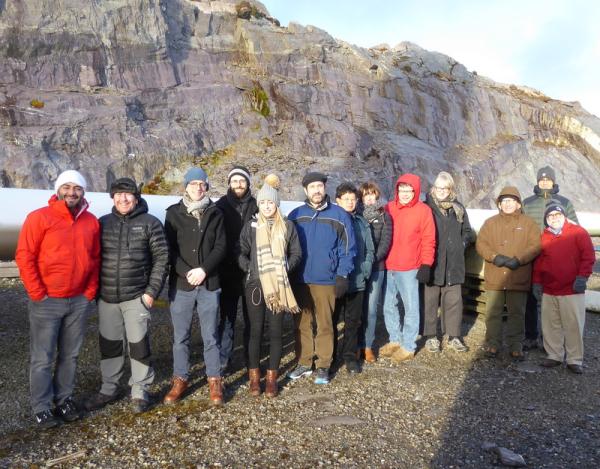
CCNY’s Lawrence Bank [second from right] and Ardavan Yazdanbakhsh [behind him]
With other members of the “RE-WIND” project in Ireland.
With the rapid development of wind energy technology in the past 15 years comes a new conundrum: how to dispose of the non-biodegradable blades in current wind turbines in a sustainable way. The City College of New York and its international partners are on it.
The estimated lifespan of non-biodegradable blades is 20 years, meaning that they’ll need to be disposed of in the near future. Under a project dubbed “RE-WIND,” an interdisciplinary research team comprising experts from City College, Georgia Institute of Technology, University College Cork in the Republic of Ireland and Queen's University Belfast in Northern Ireland is seeking an alternative to unsustainable disposal methods like landfilling and incineration.
“We’re exploring the potential reuse of the blades in architectural and engineering structures,” said Lawrence C. Bank of CCNY’s Grove School of Engineering and a project co-leader. “Such methods can have a positive effect on air quality and water quality, decreasing a major source of non-biodegradable waste.”
According to Bank the research -- spanning the disciplines of engineering, architecture, geography, sociology, and political science -- will provide valuable information about wind energy to community stakeholders. These include energy and waste-management policymakers, wind energy company executives, and wind turbine manufacturers and installers, along with concerned community members.
“The methodology we create in this research could be applicable to other large manufacturing industries in addition to the wind energy industry,” he said. “It will also provide guidance to policymakers and local leaders on best practices to benefit industry and communities.”
The project is funded under the US-Ireland Tripartite Research Program
and the researchers are using Ireland as a testing ground because of its wide variety of geographical regions in a relatively compact space: coastal, mountainous, urban, suburban, and rural.
In addition to Bank, other CCNY Grove participants include Ardavan Yazdanbakhsh, assistant professor of civil engineering, and Franco Arias, a graduate civil engineering student.
For more information on the project, contact Bank at lbank2@ccny.cuny.edu /917-453-3494, or Yazdanbakhsh at ayazdanbakhsh@ccny.cuny.edu /212-650-6569"> ayazdanbakhsh@ccny.cuny.edu /212-650-6569.
About The City College of New York
Since 1847, The City College of New York has provided a high quality and affordable education to generations of New Yorkers in a wide variety of disciplines. Today The Chronicle of Higher Education ranks CCNY #2 among public colleges with the greatest success in ensuring the social mobility of our student body; at the same time the Center for world University Rankings places it in the top 1.2% of universities worldwide in terms of academic excellence. More than 16,000 students pursue undergraduate and graduate degrees in eight professional schools and divisions, driven by significant funded research, creativity and scholarship. CCNY is as diverse, dynamic and visionary as New York City itself. View CCNY Media Kit.